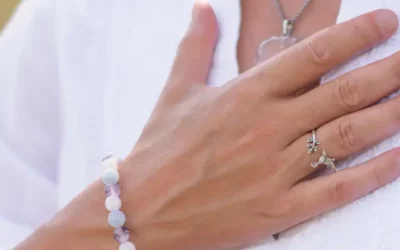“Bless me“ one would cry, “I forgot to wind up my heart this morning…. why, what have you been doing with this mind lately? How have you fed it? It looks pale, and the pulse is very slow.“
Lewis Carroll
Feeding the Mind,1907
The Sanskrit word manas can be interpreted as the senses, mind, heart, consciousness and energy as being one and the same, depending on context. We now know through science that this is true in reality.
Barring a few mavericks like Lewis Carroll, the Western mind kept these two entities, heart and head, quite separate as emotive and cognitive parts of the body. In Eastern lore, the head, which connotes brain, neurons and cognition, can be in several places, most prominent amongst them the heart and the gut. Modern science seems to approve.
HeartMath tells us that heart too is a brain with neurons and is capable of functioning independent of the brain as another brain. Our Autonomous Nervous System (ANS) comprises the sympathetic (fight-flight) and parasympathetic (freeze faint shutdown) response systems. Coherence between these two is crucial to our wellbeing.
The Vagus nerve (vagus means wandering in Latin) is central to the parasympathetic system, and is of two parts, right and left, balancing each other with stress and calmness. Polyvagal theory introduces a third element of social engagement into the binary view of the ANS as flight/fight Vs freeze/faint shutdown options. This has created a disruption of sorts in the traditional neurological view.
In interventions such as coaching, counseling and therapy, implications of the heart being a brain, Vagus nerve wandering from the brain through the heart to the gut, and the polyvagal theory that there is a middle path to the commonly understood binary aspect of ANC are significant. How can these be applied to shift human behavior?
Let me add another disruption. In the Vedic concept of energy centers known as chakras, seven or more energy nodes lie along the spine on a virtual nerve system comprising three virtual nerves, called nadis. These are called sushumna, ida, and pingala. This concept is curiously similar to the polyvagal concept, though the tantric chakra concept is 5000 years old, and provides a far more detailed repertoire of actionable possibilities to manipulate the autonomous nervous system. Is chakra real?
In the chakra concept, our energy lies at one end of the spine at the root center. This internal energy, a mirror image of the universal energy, travels when aroused to the top of the spine in the brain, somewhat mirroring the Vagus pathway. In between lies the heart center, anahata, considered the connecting point between our internal Self and our external self. Traditionally, meditating at the anahata is intended to make us socially engaged, connected, kind, loving, and compassionate, providing the balance between the fight/flight survival mode of the root or muladhara center and the calming, detached presence of the crown or sahasrara center; not very different from the polyvegal approach.
While meditating on the anahata a few things need to happen
- Breathing in a defined cycle of inhalation, holding, extended exhalation and holding supported by appropriate body posture
- Listening to or intoning a sound pattern of a defined frequency
- Visualization of a systemically positive state good for all
- Disengaging from the outcome and any barriers, focusing on the journey
- Anchoring this state through kinesthetic anchors or mudras
This multi-sensory mind-body practice integrates the energy of the body with the mind, by integrating the heart and the head.
From my experience of using this practice with over ten thousand people in spiritual healing, I found shifts that corresponded to what is commonly identified as the effect of enhanced oxytocin levels in the mind-body system. Oxytocin is commonly called the happiness or cuddling chemical. This can be very easily be verified scientifically through the plasma and saliva tests.
More interestingly, during deep anahata meditation, I was tested to be in gamma brain wave pattern, as opposed to the alpha, which was considered the only meditation pattern, till studies by Herbert Benson and others on Tibetan Lamas confirmed gamma wave existence. Gamma waves are now seen to be potential cures for several disorders including Alzheimer’s.
In simple terms, anahata meditation can save our lives, without the need to diet.
What is exciting is that through non-invasive recording of neural and cardio rhythms we may be able to both measure our behavioral tendencies and also possibly shift them through AI-enabled feedback loops. All one needs is a wearable that measures with an algorithm that shifts.
What is even more exciting is that each of the chakras, seven of them in all, has unique properties that relate to and can potentially shift other cognitive, emotional, and energetic patterns that we are addicted to.



